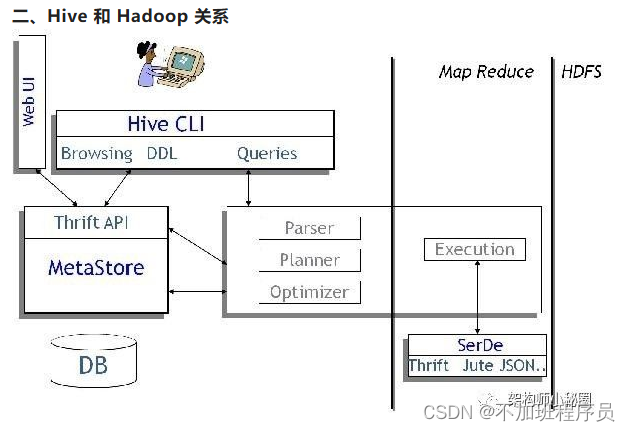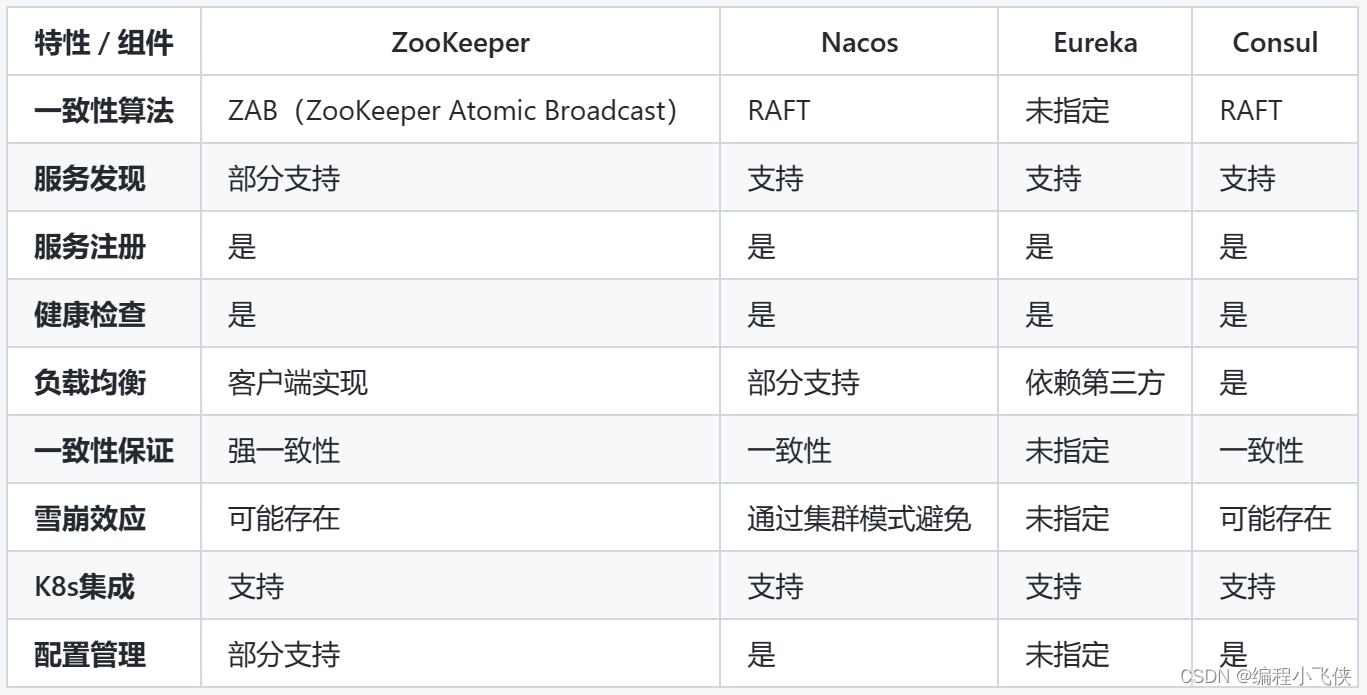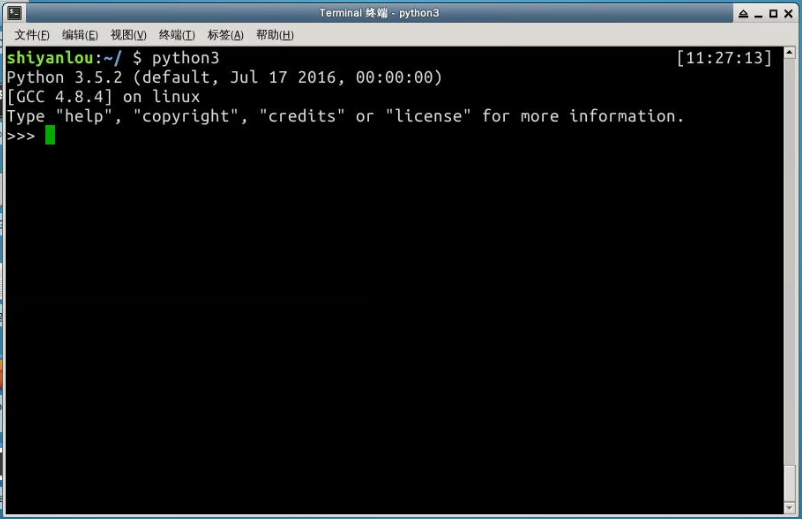1. New SDN/NFV paradigm
1.1 Define these new paradigms
The new paradigms of SDN (Software-Defined Networking) and NFV (Network Functions Virtualization) have emerged in the networking world to address the growing complexity and dynamic nature of modern data networks. Let’s define these paradigms and discuss their emergence, advantages, and disadvantages.SDN(软件定义网络)和NFV(网络功能虚拟化)这两种新范式在网络领域应运而生,旨在应对现代数据网络日益增长的复杂性和动态特性。我们来定义这些范式,并讨论它们出现的原因、优点和缺点。
1.2 SDN (Software-Defined Networking软件定义网络)
1.2.1 Definition定义
SDN is a network architecture approach that decouples the network control logic from the underlying hardware. It centralizes control in a network controller or software application, which can dynamically direct traffic on the network and make decisions about how the network operates.SDN是一种网络架构方法,将网络控制逻辑与底层硬件分离。它将控制中心化到一个网络控制器或软件应用程序中,可以动态地指导网络流量并决定网络的运作方式。
1.2.2 Why It Emerged为什么出现
Increased Network Complexity网络复杂性增加: Traditional networks, with their hardware-centric and static configurations, struggle to keep up with the dynamic demands of modern data traffic.传统的以硬件为中心且配置静态的网络难以跟上现代数据流量的动态需求。
Need for Flexibility and Scalability灵活性和可扩展性需求增长: There's a growing need for networks that can quickly adapt to changing business needs and traffic patterns.对能够快速适应变化的业务需求和流量模式的网络的需求日益增长。
Cost Efficiency成本效率: SDN offers a way to use network resources more efficiently and reduce operational costs.SDN提供了更高效使用网络资源和降低运营成本的方式。
1.2.3 Advantages优点
Flexibility and Programmability灵活性和可编程性: Networks can be quickly reconfigured and adapted through software controls.网络可以通过软件控制快速重新配置和调整。
Efficient Resource Utilization资源利用效率: Optimizes network resources and improves overall network performance.优化网络资源,提高整体网络性能。
Centralized Management集中化管理: Simplifies network management and reduces complexity.简化网络管理,减少复杂性。
12.4 Disadvantages缺点
Security Risks安全风险: Centralized control can be a single point of failure and a target for attacks.集中化控制可能成为单点故障和攻击目标。
Implementation Costs实施成本: Transitioning to an SDN architecture can be costly and complex.过渡到SDN架构可能既昂贵又复杂。
Interoperability Issues互操作性问题: Integration with existing network infrastructure can be challenging.与现有网络基础设施的集成可能具有挑战性。
1.3 NFV (Network Functions Virtualization)
1.3.1 Definition定义
NFV is a network architecture concept that uses virtualization technology to manage network services. It involves decoupling network functions such as firewalls, load balancers, and intrusion detection systems from dedicated hardware appliances, allowing them to run as software on general-purpose servers.NFV是一种使用虚拟化技术来管理网络服务的网络架构概念。它涉及将防火墙、负载均衡器和入侵检测系统等网络功能从专用硬件设备中分离出来,允许它们作为软件运行在通用服务器上。
1.3.2 Why It Emerged为什么出现
Hardware Limitations硬件限制: Traditional appliance-based network functions can be inflexible and expensive.传统的基于设备的网络功能可能不灵活且昂贵。
Rapid Service Deployment快速服务部署: The need to deploy and scale network services more quickly and flexibly.需要更快、更灵活地部署和扩展网络服务。
Cost Reduction成本降低: Reducing reliance on expensive proprietary hardware.减少对昂贵专有硬件的依赖。
1.3.3 Advantages优点
Scalability and Flexibility可扩展性和灵活性: Easier and quicker to deploy and scale network services as needed.更容易、更快地根据需要部署和扩展网络服务。
Cost Efficiency成本效率: Reduces the need for specialized hardware and can lower capital and operational expenses.减少了对专用硬件的需求,可以降低资本和运营费用。
Improved Service Innovation改进的服务创新: Enables rapid development and deployment of new network services.使新网络服务的快速开发和部署成为可能。
1.3.4 Disadvantages缺点
Complexity in Management管理复杂性: Managing virtualized network functions can be complex, requiring new skills and tools.管理虚拟化网络功能可能复杂,需要新技能和工具。
Performance Concerns性能问题: Virtualized functions may not always match the performance of dedicated hardware.虚拟化功能可能无法始终匹配专用硬件的性能。
Security Risks安全风险: Virtualization adds layers of technology that can be exploited if not properly secured.虚拟化增加了可被利用的技术层次,如果没有适当的安全措施,可能会受到攻击。
In summary, SDN and NFV have emerged as responses to the need for more flexible, scalable, and cost-effective network architectures. While they offer significant benefits in terms of efficiency, management, and adaptability, they also bring challenges in terms of security, performance, and integration with existing systems.总结来说,SDN和NFV作为对更灵活、可扩展和成本有效网络架构需求的回应而出现。虽然它们在效率、管理和适应性方面提供了显著的好处,但也带来了安全性、性能和与现有系统集成方面的挑战。
2.Information systems security and cryptography basics
2.1 explain the typical threats faced by an information system connected to the Internet
连接到互联网的信息系统面临着多种威胁,这些威胁可能会危害它们的安全、完整性和功能。这些威胁通常包括:
1. 恶意软件攻击:恶意软件包括病毒、蠕虫、木马、勒索软件和间谍软件。它们旨在破坏、扰乱或未经授权访问计算机系统。
2. 网络钓鱼攻击:网络钓鱼通过伪造的电子邮件或网站欺骗个人提供敏感信息,如用户名和密码。
3. 拒绝服务(DoS)和分布式拒绝服务(DDoS)攻击:这些攻击目的是通过用大量互联网流量淹没系统或网络,使之无法使用。
4. 中间人攻击(MitM):在这种攻击中,攻击者拦截并可能改变两方之间的通信,而这两方认为他们直接相互通信。
5. SQL注入:这种攻击涉及将恶意SQL查询插入输入字段中,以未经授权地访问或操纵数据库。
6. 零日漏洞利用:这些是针对软件中未知的特定漏洞的攻击,软件开发者尚未知晓这些漏洞,也没有补丁。
7. 内部威胁:这些威胁来自组织内部的个人,如员工或承包商,他们滥用其访问权限以危害信息系统。
8. 数据泄露:未经授权地访问系统的数据,通常是为了窃取敏感或机密信息。
9. 会话劫持和凭证盗窃:攻击者可能劫持会话控制机制,以未经授权地访问计算机系统中的信息或服务。
10. 跨站脚本攻击(XSS):攻击者将恶意脚本注入其他用户查看的网页中,以绕过访问控制。
11. 勒索软件:一种加密受害者数据的恶意软件,使数据无法访问,并要求赎金以恢复访问。
12. 高级持续性威胁(APTs):这些是长期和有针对性的网络攻击,其中侵入者访问网络并长时间未被发现。
13. 网络窃听:这涉及拦截网络上的私人通信,如电子邮件消息或电话通话。
14. 物联网(IoT)漏洞:随着物联网设备数量的增加,这些设备中的漏洞可能被利用来未经授权地访问网络。
15. 社会工程学:操纵个人执行操作或泄露机密信息。
16. 加密挖矿劫持:未经授权地使用他人的计算机进行加密货币挖矿。
这些威胁不断演变,需要强大且适应性强的安全措施来有效保护信息系统。
1. IP spoofing(IP地址伪装):发生在第三层,即网络层。在这个层级上,攻击者可能会伪造IP包的源地址,使得似乎是从另一个合法的地址发送的,这种技术可以用于多种攻击,比如拒绝服务(DoS)攻击。
2. DNS缓存污染(pollution de cache DNS):虽然DNS是应用层(第七层)的协议,但它对整个互联网的运作至关重要。DNS缓存污染是指恶意或误导性的DNS数据被插入到DNS服务器的缓存中,导致用户可能被导向错误的服务器或网站。
3. TCP SYN flooding(TCP SYN泛洪攻击):发生在传输层(第四层)。这是一种拒绝服务攻击方法,通过发送大量的TCP/SYN包到目标系统来消耗目标的资源,导致正常的网络服务无法使用。
内容主要关注互联网和本地网络,但也指出其他类型的网络,如物联网(IoT)和工业网络,也面临重大的安全问题。物联网和工业网络由于其独特的构建和运作方式,带来了新的安全挑战,这些网络的安全漏洞可能对个人隐私和工业控制系统产生严重的后果。
2.2 explain the security properties
The five fundamental properties of information security are信息安全的五个基本属性是:
1. Confidentiality保密性(Confidentialité): Ensuring that information is accessible only to those authorized to have access. This means protecting data from unauthorized access or disclosure.确保信息仅对授权访问的人可见。这意味着保护数据不被未授权的人访问或泄露。
2. Integrity完整性(Intégrité): Data remains in its original state, unaltered in content or format. This includes preventing the data from being accidentally or maliciously modified during transmission or storage.数据保持未经篡改的原始状态,无论是内容还是格式。这包括防止数据在传输或存储过程中被意外或恶意修改。
3. Non-repudiation/Attribution不可否认性(Non répudiation)/归责(imputation): The ability to ascertain the origin of an action and ensure that the initiator of the action cannot deny their involvement. This is often achieved through mechanisms like logging, digital signatures, etc.可以确定某一行为的起源,并确保行为的发起者不能否认他们的行为。这通常通过日志记录、数字签名等方式实现。
4. Authentication认证(Authentification): Ensuring that one can confirm the identity of the entity they are communicating with, whether it is a server, an individual, or any other entity. This typically involves mechanisms such as usernames and passwords, digital certificates, two-factor authentication, etc.确保能够确认自己正在与之通信的实体的身份,无论是服务器、个人还是其他任何实体。这通常涉及到用户名和密码、数字证书、双因素认证等机制。
5. Availability可用性(Disponibilité): Ensuring that authorized users can access services and resources under the conditions of intended use (such as time frames, etc.). This involves preventing service disruptions, ensuring system resilience, and addressing various denial-of-service attacks.保证授权用户在预定的使用条件下(如时间段等)能够访问服务和资源。这涉及到防止服务中断、确保系统恢复能力和应对各种拒绝服务攻击。
These properties are the elements that constitute the foundation of any secure system, and each must be protected by corresponding security policies, control measures, and technologies.这些属性是构成任何安全系统基础的元素,每个属性都必须通过相应的安全策略、控制措施和技术来保护。
2.3 explain the possible parries and countermeasures against such threats
这段文字描述了与信息安全属性相关的攻击类型和防御措施:
1. 保密性:
攻击方式:窃听(如通过监听网络流量获取敏感信息)。
防御措施:加密(使用密码学技术来加密数据,防止未授权的访问)。
2. 完整性:
攻击方式:故意修改程序或数据(还包括传播过程中的错误或通信渠道的噪声等)。
防御措施:哈希函数(使用哈希函数来验证数据的完整性,确保数据未被篡改)。
3. 认证:
攻击方式:身份盗用、假冒网站、欺骗(在不同层次上的欺骗,如IP地址伪装)。
防御措施:认证协议、数字签名(以及使用公钥证书)。
4. 可用性:
攻击方式:服务拒绝攻击(DoS和DDoS),这些攻击可能通过网络流量泛滥或利用系统漏洞来进行。
防御措施:流量过滤、流量分析、负载均衡、服务器冗余等。
2.4 explain what resilience of the Internet is
互联网的弹性是指其在面对各种事件和攻击时保持功能正常运行的能力,以及限制事件影响的能力。
2.5 explain the various security-related shortcomings in the design of IP stack protocols such as IP, DNS and BGP
这段文字讨论了IP协议栈在安全性方面的原生缺陷:
1. IP协议设计时的安全考虑缺失
当IP协议及其相关协议(如TCP、UDP、ICMP、路由协议等)被设计时,安全概念并未被考虑在内。当时,人们没有想到这些协议可能会被用于恶意目的。
因此,这些协议最初并未实现任何安全机制。
2. IP协议栈的安全弱点
地址伪装:由于缺乏发送者和接收者的身份验证机制,IP地址可以被伪造。
数据未加密:数据在传输过程中没有加密,意味着任何人如果能访问网络就能监听连接并获取数据。
路由篡改:数据报文的路由可能被修改,从而将数据报文重定向到其他目的地。
这些缺陷使得IP协议栈易于受到各种攻击,如IP欺骗、数据窃听和路由劫持。随着互联网的发展和网络安全威胁的增加,这些安全问题变得越来越明显,迫切需要通过额外的安全措施来加以解决。例如,使用安全层(如SSL/TLS)来加密数据,以及使用更复杂的认证和监控机制来保护网络通信。
3. Architecture of the core network
3.1 explain the different network segments (access, collection, core) and their functions.
电信运营商的网络架构通常分为几个关键部分,每个部分都有其特定的功能:The network architecture of a telecommunications operator is typically divided into several key segments, each with a specific function:
1. 接入段Access Segment:这是网络架构的第一层。它涉及将最终用户连接到运营商的网络。这一层可以包括各种技术,如光纤、DSL或无线连接(如移动网络的4G/5G)。其主要目的是为客户提供进入网络的入口点。This is the first layer of the network architecture. It involves connecting the end-users to the operator's network. This layer can include various technologies such as optical fiber, DSL, or wireless connections (like 4G/5G for mobile networks). Its main purpose is to provide an entry point into the network for customers.
2. 收集段(或汇聚段)Aggregation Segment (or Collection Segment):这一层连接接入段和网络核心。它汇集了来自接入段多个用户的流量,并将其引导至网络核心。这个段落对于有效管理流量和保证高服务质量至关重要。它可以集成如交换机和路由器等设备来管理流量。 This layer connects the access segment to the network core. It aggregates traffic from multiple users of the access segment and directs it to the network core. This segment is crucial for efficiently managing traffic and ensuring high quality of service. It can incorporate equipment like switches and routers to manage traffic.
3. 核心网络段Core Network Segment:网络核心(或主干网)是网络架构的中心部分。它负责在不同地区甚至跨国的大规模数据传输。这一层使用高带宽技术以确保数据的高效快速传输。它还负责管理路由和与其他网络及运营商的连接。The network core (or backbone) is the central part of the network architecture. It is responsible for large-scale data transmission across different regions or even countries. This layer uses high-bandwidth technologies to ensure efficient and fast data transmission. It is also responsible for managing routing and connectivity with other networks and operators.
关于服务的位置,电信运营商拥有几种关键类型的设施:Regarding the location of services, telecommunications operators have several key types of facilities:
数据中心Data Centers::它们托管大量的数据处理和存储设备。数据中心可以位于不同的位置,通常根据安全性、可访问性和网络连接性来选择。They host a large amount of data processing and storage equipment. Data centers can be located in various places, often chosen for their security, accessibility, and network connectivity.
认证服务器Authentication Servers:这些服务器对网络安全至关重要。它们管理连接到网络的用户和设备的认证。它们通常位于安全的地方,通常在数据中心内。These servers are crucial for network security. They manage the authentication of users and devices connecting to the network. They are typically located in secure places, often within data centers.
接入点(PoP)Points of Presence (PoPs):这些是用户访问运营商网络的站点。它们可能包括用于收集和路由流量的设备。 These are sites that allow users to access the operator's network. They may include equipment for collecting and routing traffic.
其他特定服务Other Specific Services:根据运营商的产品,其他服务可能位于战略位置,如游戏服务器、流媒体平台或云服务。 Depending on the operator's offerings, other services may be located at strategic locations, such as game servers, streaming platforms, or cloud services.
这些段落和服务中的每一个都在电信运营商网络的整体运行和效率中扮演着关键角色。Each of these segments and services plays a key role in the overall operation and efficiency of a telecommunications operator's network.
4. Technologies to access the Internet
4.1 name these technologies, describe them in terms of throughput, list the services available depending on throughput, etc.
有几种技术用于访问互联网,每种技术在吞吐量方面各有特点,它们支持的服务类型也各不相同。以下是这些技术的概述There are several technologies used to access the Internet, each with its own characteristics in terms of throughput, and the types of services they enable. Here's an overview of these technologies:
1. 拨号上网Dial-Up
吞吐量Throughput:非常低(最高56 Kbps)Very low (up to 56 Kbps)。
服务Services:由于速度低,仅限于基本的网页浏览、电子邮件和非常轻量级的数据使用。Limited to basic web browsing, email, and very light data usage due to low speed.
2. 数字用户线Digital Subscriber Line(DSL)
吞吐量Throughput:变化较大,通常在1 Mbps至100 Mbps之间Varies, typically from 1 Mbps to 100 Mbps。
服务Services:支持网页浏览、流媒体播放、游戏和VoIP。速度可能因与服务提供商的距离而大不相同Supports web browsing, streaming, gaming, and VoIP. Speeds can vary greatly depending on the distance from the service provider.
3. 有线互联网Cable Internet:
吞吐量Throughput:通常在10 Mbps至1 Gbps之间。Generally between 10 Mbps to 1 Gbps.
服务Services:适合重度网页使用、高清视频流媒体播放、在线游戏、大文件下载和云服务。Suitable for heavy web usage, high-definition video streaming, online gaming, large file downloading, and cloud services.
4. 光纤Fiber Optic:
吞吐量Throughput:从100 Mbps到1 Gbps及以上Ranges from 100 Mbps to 1 Gbps and above。
服务Services:高速互联网,适用于所有在线活动,包括4K/8K视频流媒体播放、在线游戏、大文件上传和下载以及广泛使用云服务High-speed internet suitable for all online activities, including 4K/8K video streaming, online gaming, large file uploads and downloads, and extensive use of cloud services。
5. 卫星互联网Satellite Internet:
吞吐量Throughput:从12 Mbps到100 Mbps不等Ranges from 12 Mbps to 100 Mbps。
服务Services:适用于偏远地区。支持网页浏览、电子邮件和基本流媒体播放,但实时应用(如在线游戏)可能会因延迟成为问题Useful in remote areas. Supports web browsing, email, and basic streaming, but latency can be an issue for real-time applications like online gaming。
6. 移动网络Mobile Networks(3G、4G/LTE、5G) :
吞吐量Throughput:
3G:高达数 MbpsUp to a few Mbps。
4G/LTE:高达100 Mbps或更多Up to 100 Mbps or more。
5G:在理想条件下可超过1 GbpsCan exceed 1 Gbps in optimal conditions。
服务Services:实现移动互联网接入。适用于网页浏览、流媒体播放、游戏和VoIP。5G提供了高速移动活动和物联网应用的能力。Enables mobile internet access. Suitable for web browsing, streaming, gaming, and VoIP. 5G offers capabilities for high-speed mobile activities and IoT applications.
7. Wi-Fi(无线保真Wireless Fidelity):
吞吐量Throughput:取决于底层互联网连接和Wi-Fi技术(如Wi-Fi 5、Wi-Fi 6),范围可以从54 Mbps到数GbpsDepends on the underlying internet connection and Wi-Fi technology (e.g., Wi-Fi 5, Wi-Fi 6), can range from 54 Mbps to several Gbps.
服务Services:支持包括流媒体播放、游戏和大文件传输在内的所有类型的互联网活动,但性能会受到信号强度和网络拥堵等因素的影响。Supports all types of internet activities, including streaming, gaming, and large file transfers, but the performance is influenced by factors like signal strength and network congestion.
8. 固定无线Fixed Wireless:
吞吐量Throughput:通常在10 Mbps至1 Gbps之间Typically between 10 Mbps to 1 Gbps。
服务Services:在没有DSL、有线或光纤的地区的替代方案;支持一般的网页活动、流媒体播放和游戏An alternative in areas without DSL, cable, or fiber; supports general web activities, streaming, and gaming.
这些技术中的每一种都提供了不同水平的吞吐量,这影响了它们能够有效支持的互联网服务和活动的类型。光纤和先进的移动网络如5G提供了最高的速度,能够处理几乎所有类型的互联网服务,包括那些需要高带宽和低延迟的服务。相比之下,拨号和卫星等较旧的技术在它们能有效支持的服务方面更加有限。 Each of these technologies offers different levels of throughput, which impacts the kind of internet services and activities that can be efficiently supported. Fiber optic and advanced mobile networks like 5G provide the highest speeds and are capable of handling almost all types of internet services, including those that require high bandwidth and low latency. In contrast, older technologies like dial-up and satellite are more limited in the services they can support effectively.







































